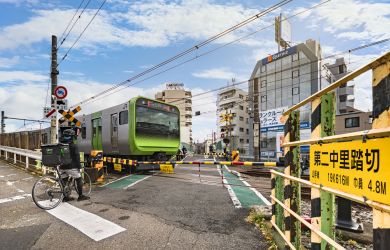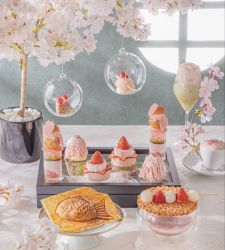
Originally published on metropolis.co.jp on November 2011


After 3/11, a small but outspoken number of Japanese musicians penned protest songs about the nuclear disaster that had befallen their country. Among them was singer and rapper Coma-chi, who’s “Say ‘NO”’ took direct aim at the nuclear industry, government and media.
But Coma-chi wasn’t finished. More than just pointing fingers, the young Tokyoite wanted to offer a positive vision for the future. The result was one of the more remarkable projects that Japanese music has seen—a CD and storybook created with painter Tokio that offers a dream-like allegory of a non-nuclear, non-materialistic alternative future for the country.
Coma-chi’s “Say ‘NO”’ began with a visit to the German antinuclear rallies that followed Fukushima. But Taiyo O Yobu Shonen (“A Boy Calls The Sun”) came out of a different impetus.
“I really wanted to do something for kids,” she says in an interview at the Metropolis office. “After the disaster, I felt like our values needed to change—it gave us all a chance to reflect on what is really important. I went to Minamisoma to do a charity concert, and met a girl at one of the evacuation centers. She was the only kid surrounded by old folks—and I wanted to give her hope. My song lyrics are difficult, so I felt a picture book and story would help convey the message.”
In composing the tracks, Coma-chi teamed up with some of Japan’s best funk and jazz musicians—among them 45 aka Swing-O and Mabanua of the hip Origami imprint—to tell the story of a boy who undergoes a transformative experience.
Conveyed through music, lyrics, and an accompanying storybook featuring Tokio’s psychedelic paintings, A Boy Calls The Sun (pictured) tells the tale of a youth who sets out in search of a cure for his addled parents, who are afflicted by a mysterious disease called “American Dream.” A doctor has told him that only the sun can cure them and he tries to locate it and seeks its help.
Along the way he encounters a false, manmade sun—worshipped by a kind of “nuclear village”—which like nuclear power has a benevolent, energy-giving side, and a dark, destructive side that afflicts people with the materialistic American Dream disease.
Leaving the benighted village, he travels to a South Sea island where he meets a shaman, who hands him a drum and tells him that if he plays it the real sun will appear. He beats the drum and the sun appears, curing everyone (and leaving them with funky clothes and afros).
“The false sun is a metaphor for the mixed blessing of nuclear power,” Coma-chi explains, “and Tokio may have painted the village with Japan’s so-called ‘nuclear village’ in mind.
“There is a tendency among Japanese artists to avoid difficult subjects like nuclear power,” she continues, “and there’s no way I could have done this if I was still with a major label.” Coincidentally, Coma-chi went independent just before the disaster, founding her own Queen’s Room imprint in March.
“There are good and bad sides to the Japanese emphasis on harmony,” adds the throaty singer. “The good side is social order—during the disaster everyone stuck together. But the bad side is that if someone disrupts the harmony then there is a strong reaction against it. For example with nuclear power—if you say we need to end it to restore harmony, then you need to take some action that may not be harmonious at first.”
Coma-chi (she named herself after ancient Japanese poet Ono no Komachi) is realistic about the effect that her mini-opus will achieve. But if even a small number of minds are changed while enjoying her music, she’ll be content.
“I’m not sure if the disaster changed Japan,” she muses. “Hopefully people are less obsessed with celebrity culture and money, and are thinking more about what is really important, like love. I may be idealistic, but if Taiyo O Yobu Shonen can move things even a bit in that direction I’ll be pleased.”
Shibuya Boxx, Nov 18 (listing). www.queens-room.com





